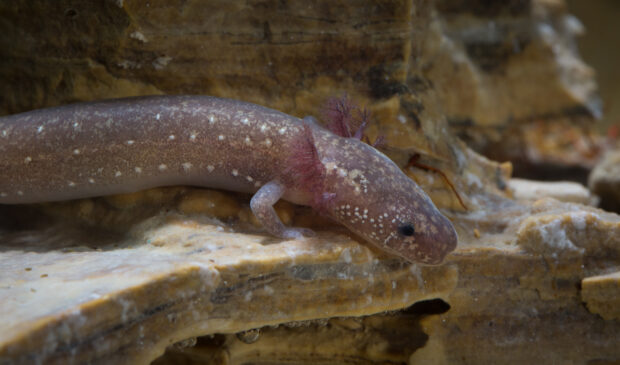Barton Springs/Edwards Aquifer Conservation District installing two monitoring wells at Garrison and Zilker parks
Friday, January 12, 2024 by
Nina Hernandez This month, the Barton Springs/Edwards Aquifer Conservation District will install two new scientific monitoring wells in Garrison and Zilker parks. The new wells will be used to collect information about Edwards Aquifer water level and quality, as well as further the city’s federally mandated task of protecting the health of the endangered Barton Springs and Austin blind salamanders.
In a Wednesday press release, the district detailed the project, which should each take approximately three weeks to complete. The Garrison Park well is a standard monitoring well to be located on the northwest side of the Garrison Park Municipal Pool and will be used to collect water level and water quality data for the Edwards Aquifer.
The Zilker Park well, located south of Barton Springs, will be a multiport well capable of monitoring multiple aquifer zones and providing a more in-depth understanding of the aquifer, including flow, dissolved oxygen levels and other water chemistry features of groundwater in the Barton Springs area.
Barton Springs/Edwards Aquifer Conservation District staff hydrogeologist Jeff Watson told the Austin Monitor the specialized well allows the district to monitor specific vertical zones within the well.
“It’s kind of like an elevator that goes up and down the thickness of the aquifer, and you can stop at different levels of the aquifer and collect discrete data,” Watson said. “So it’s going to be a really valuable dataset because one of the key things with salamanders is the concentration of dissolved oxygen.”
The new equipment will allow the district to create a specialized vertical profile of the whole aquifer and measure the dissolved oxygen along that profile.
“That’s kind of a key environmental factor for salamander survival,” Watson said.
The well will also allow the district to collect data on water levels, hydraulic pressure and water quality.
“It will really give us a whole lot of data that we didn’t have before for understanding the spring system and how the flow system works, dissolved oxygen distribution and things like that,” Watson said.
The district and the city of Austin are required by the state of Texas and the U.S. Fish and Wildlife Service to protect the endangered salamanders, which rely on dissolved oxygen to survive. The amount of dissolved oxygen available in the water has decreased due to the severe drought Central Texas is currently experiencing. The district said one of the benefits of the multiport well is that it can provide the data necessary to determine if it’s feasible to manually increase dissolved oxygen in the groundwater that discharges at Barton Springs.
“I think the way that it will help the salamanders is by giving the biologists and scientists a better understanding of the Barton Springs flow system and how dissolved oxygen is distributed through that system,” Watson said. “I think that opens up new research questions and possibilities for strategies that can be implemented to help the salamanders, like oxygen augmentation and things like that.”
According to the press release, it is possible that sediment and fluids associated with the drilling will enter caves and conduits feeding the springs. This could cause sediment plumes to discharge from the spring outlet in Barton Springs Pool, resulting in temporarily cloudy water. The associated drilling fluids and sediment are nontoxic and will not harm swimmers, fish or salamanders, Watson said.
“It would be temporary if it did happen,” Watson said. “And really the only impact is that it would affect the cloudiness of the water for a little while, until that sediment plume kind of got pushed through the system.”
The Austin Monitor’s work is made possible by donations from the community. Though our reporting covers donors from time to time, we are careful to keep business and editorial efforts separate while maintaining transparency. A complete list of donors is available here, and our code of ethics is explained here.
You're a community leader
And we’re honored you look to us for serious, in-depth news. You know a strong community needs local and dedicated watchdog reporting. We’re here for you and that won’t change. Now will you take the powerful next step and support our nonprofit news organization?








